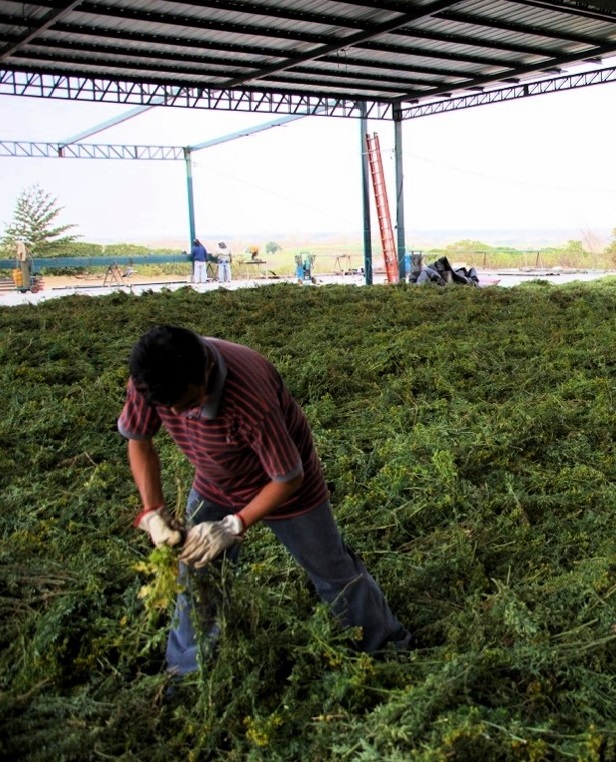Distilling Essential Oils: The Role of Brix

We check the Brix level before harvesting our plants. And there are some plants that need to sit a certain length of time before being placed in the cooker. The Brix level tells us exactly when to do so.
To determine the perfect time to harvest the crops, we do the following: watch the sugar (the Brix level in the plants) and test the oil level compound percentages.
When I’m working with new plants like Dorado Azul, for example, I have to bring them to the farm and domesticate them. Dorado Azul normally just grows in the wild and can be harvested only once a year. We had to learn its characteristics, its behavior, to see if we could harvest it more than once a year. Now, seven years later, we’re able to harvest Dorado Azul two times a year.
In the meantime, I had to know where and when the oil was there. So we’d cut Dorado Azul and then distill it and cut and distill. We did this from the moment I saw it starting to develop the pre-bud all the way through the budding stage, flowering stage, post-flowering stage, seed stage, and then final seed stage to where it drops on the ground.
So we were distilling Dorado Azul during that first stage sometimes two or three times a week to determine where we would get the best oil percentage. So you see, it’s all work. Watch the behavior of the plants to determine their needs. Sample distill to determine the perfect distilling time.
Next, we need to determine the length of time we keep it in the distillery. Do we distill for a half hour? An hour? Three hours, four hours, five hours? What is the optimal distilling time? Distilling is such an art.

